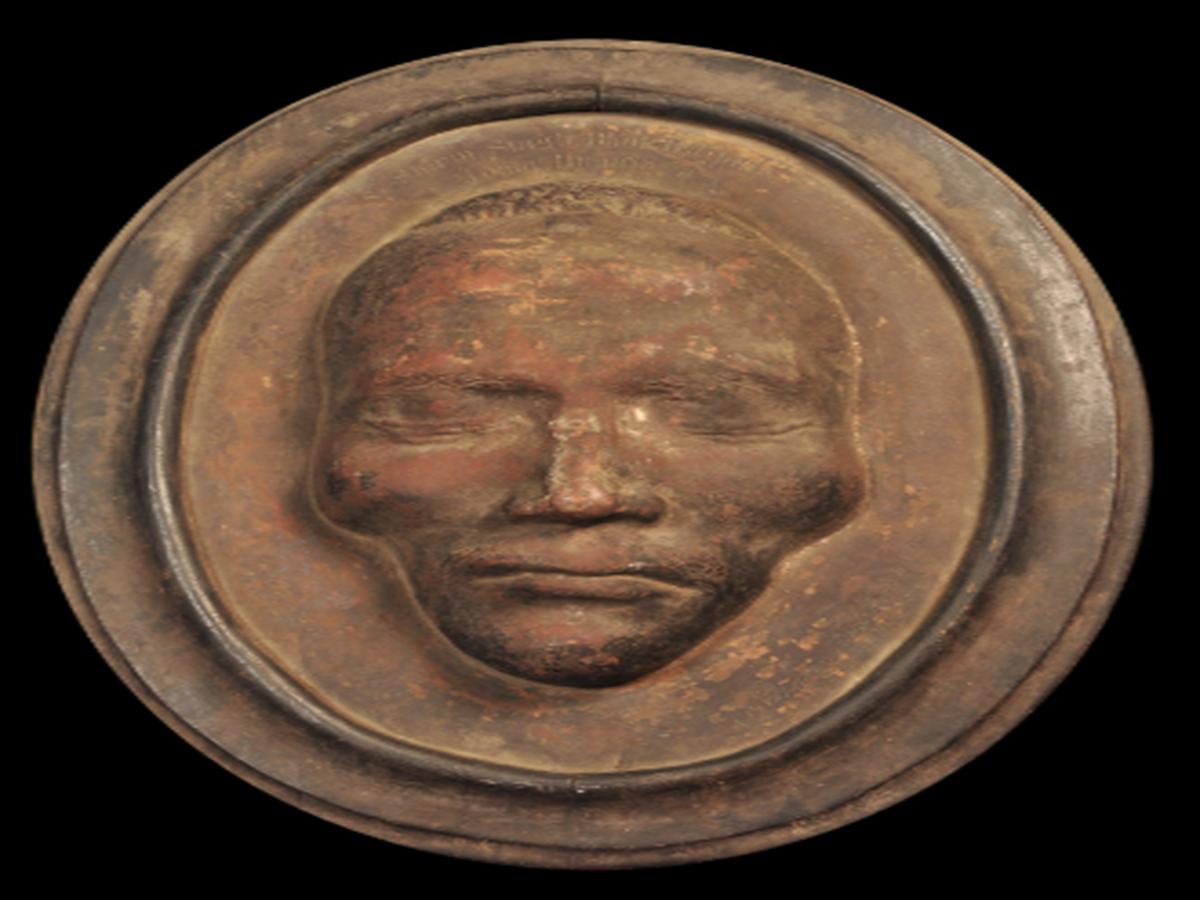State
Tribe Name
Art Type
short description
Shirm Sing is a face mould belonging to a Bhot tribal member hailing from Johar in the Himalayas. The mould is an artwork; it imbues a cultural identity. The oval shaped metallic cast contains a detailed facial impression of a man framed tidily within an oval wooden base. Also engraves, at the top of the mould, are his name "Shirm Sing" and the geographical information of his native place "Johar" to add personal as well as geographical identity. Such face casts would have been kept as memorial objects and possibly used to preserve a likeness of important members of the community. The Bhot tribe inhabits high altitudes in timelines with Johar in Uttarakhand. They had a history of clear cultural identity.
Thumbnail

Filter Postion
Left
Filter Background
Off
Theme
Filter Header Image

content
Image

description
Shirm Sing is a face mould belonging to a Bhot tribal member hailing from Johar in the Himalayas. The mould is an artwork; it imbues a cultural identity. The oval shaped metallic cast contains a detailed facial impression of a man framed tidily within an oval wooden base. Also engraves, at the top of the mould, are his name "Shirm Sing" and the geographical information of his native place "Johar" to add personal as well as geographical identity. Such face casts would have been kept as memorial objects and possibly used to preserve a likeness of important members of the community. The Bhot tribe inhabits high altitudes in timelines with Johar in Uttarakhand. They had a history of clear cultural identity.
Bhot meaning Tibetan descent or influence, and Rajput meaning soldier class, exemplifies this unique lineage of the tribe in terms of its mixed Tibetan and Rajput origins. Their duality goes to ancestral backgrounds and practices in tradition and dress and lastly into art that they produce. Face moulds like these are rare, and culturally very essential: as here artistic intentions intersect with ethnography. Such casts tell us about how the Himalayan tribes immortalized their members in an artistic way, emphasizing the values of honor and remembrance. Metal work and wood framing reflect the craft of highly skilled artisans around the area. Such artifacts are crucial for understanding the identity of the Bhot and more broadly Himalayan tribal communities in the history of societal fabrics.
Bhot meaning Tibetan descent or influence, and Rajput meaning soldier class, exemplifies this unique lineage of the tribe in terms of its mixed Tibetan and Rajput origins. Their duality goes to ancestral backgrounds and practices in tradition and dress and lastly into art that they produce. Face moulds like these are rare, and culturally very essential: as here artistic intentions intersect with ethnography. Such casts tell us about how the Himalayan tribes immortalized their members in an artistic way, emphasizing the values of honor and remembrance. Metal work and wood framing reflect the craft of highly skilled artisans around the area. Such artifacts are crucial for understanding the identity of the Bhot and more broadly Himalayan tribal communities in the history of societal fabrics.
Image Mode
landscape
promoted
On
Verified
Off
